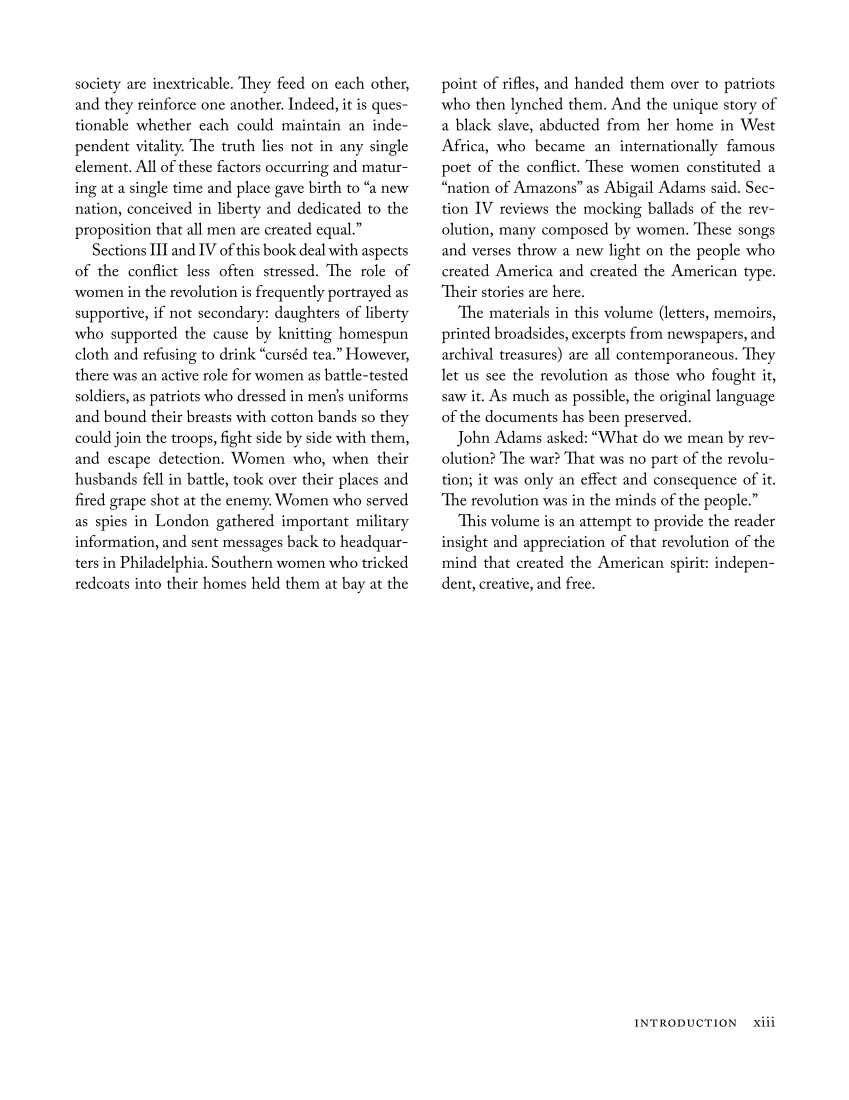introduction xiii society are inextricable. Th ey feed on each other, and they reinforce one another. Indeed, it is ques- tionable whether each could maintain an inde- pendent vitality. Th e truth lies not in any single element. All of these factors occurring and matur- ing at a single time and place gave birth to “a new nation, conceived in liberty and dedicated to the proposition that all men are created equal.” Sections III and IV of this book deal with aspects of the confl ict less often stressed. Th e role of women in the revolution is frequently portrayed as supportive, if not secondary: daughters of liberty who supported the cause by knitting homespun cloth and refusing to drink “curséd tea.” However, there was an active role for women as battle-tested soldiers, as patriots who dressed in men’s uniforms and bound their breasts with cotton bands so they could join the troops, fi ght side by side with them, and escape detection. Women who, when their husbands fell in battle, took over their places and fi red grape shot at the enemy. Women who served as spies in London gathered important military information, and sent messages back to headquar- ters in Philadelphia. Southern women who tricked redcoats into their homes held them at bay at the point of rifl es, and handed them over to patriots who then lynched them. And the unique story of a black slave, abducted from her home in West Africa, who became an internationally famous poet of the confl ict. Th ese women constituted a “nation of Amazons” as Abigail Adams said. Sec- tion IV reviews the mocking ballads of the rev- olution, many composed by women. Th ese songs and verses throw a new light on the people who created America and created the American type. Th eir stories are here. Th e materials in this volume (letters, memoirs, printed broadsides, excerpts from newspapers, and archival treasures) are all contemporaneous. Th ey let us see the revolution as those who fought it, saw it. As much as possible, the original language of the documents has been preserved. John Adams asked: “What do we mean by rev- olution? Th e war? Th at was no part of the revolu- tion it was only an eff ect and consequence of it. Th e revolution was in the minds of the people.” Th is volume is an attempt to provide the reader insight and appreciation of that revolution of the mind that created the American spirit: indepen- dent, creative, and free.
Document Details My Account Print multiple pages
Print
You have printed 0 times in the last 24 hours.
Your print count will reset on at .
You may print 0 more time(s) before then.
You may print a maximum of 0 pages at a time.




















































































































































































































































































































